|
My day job is to certify personal trainers/fitness instructors and when they come in for orientation on day one, each of us teachers give a run down of our experience and offer advice for those beginning their careers. The message I try to get across is that I’m here teaching instead of being a full timer in the industry because I’m not that successful in monetary terms. My whole journey for fitness & for self defence has not been what it could have because I assumed that if I went and studied and became super qualified in my field (with real knowledge), the rest would take care of itself. People would flock to you because of your qualifications, knowledge and training. Problem is this couldn’t be further from the truth. What people need to do & what they want to do in terms of training, are two different things. If you want them coming back & paying your bills you need to cater for the want not the need for the majority of the population. This is prevalent in martial arts as people are content with easy, with a lie rather than the inconvenient truth. I had a personal trainer subletting from my gym for a few years who was a great trainer yet was an introvert, super quiet antisocial media and would never promote himself (probably why we get along so well). He used to run a commercial gym with an equally talented trainer who is his polar opposite. This guy is an outgoing extrovert who is a charismatic people person that is always posting on social media and does classes at a number of different facilities. At this moment my introvert mate has left the industry due to inadequate work and the extrovert is flourishing. So I advise them to work on their people skills & that would lead to an increased chance of prolonging their personal training careers. People pay for the sizzle, not the steak. This is identical in the martial arts industry, in fact I’d say that this side is more important than quality material if your objective is $$$$. We see it time and time again with really shitty classes bursting at the seems with students, look at the top Combatives & Self Defence guys, very few have a successful permanent facility/location. The other thing I advise them to do is network, do as I say not as I do! I don’t network because that doesn't sit well with me, I’m not willing to swallow my pride and play those games either. I, in good conscious find it difficult to network. I can’t sit in a room with a bunch of martial arts people who are selling snake oil, frauds essentially. I feel my presence, is condoning what they do. I’ve had more than a few offers to collaborate that I’ve respectfully declined. Sure it probably would have opened doors for me but I need to be able to look at myself in the mirror. Don’t get me wrong there are people I wouldn’t hesitate to work with, just not that many. This industry is the worst! I mean in the latter portion of my life I’ve made it an objective to have an opinion, albeit an informed one & if asked to speak it, I will. So if I do all the necessary research & if I inherently disagree with what you are saying or believe in, I won’t work with you unless it’s on my terms. Nothing personal, I’ve hosted many domestic & international people at my facility in the past that I’ve liked as a person but if they couldn’t add to our skill-set I haven’t invited them back. This may sound hypocritical as I’m about to host the World Self Defence Challenge with people that have varying opinions that are not in line with my thinking. Difference is these guys are putting their money where their mouth is & putting it on the line. If they are talking out their ass they will be exposed, plain and simple. I have a tonne of respect for that. The other thing that I do not understand is when did it become so wrong to disagree? Why are we not allowed to have a difference of opinion anymore? I have much more respect for the people in my corner who critique my material, drills etc & will tell me if they don’t like it. I will listen to their point of view as long as its comes from an evidence based platform I’m all ears. I hate to be that guy who says show me a video of that working real time, there’s so much fight footage of all kinds out there that surely you can give me something? I don’t adhere to the notion that this guy does it well or I used it in a street fight once, as I’ve said I’ve seen highly regarded instructors lie through their teeth with their war stories and I’m pretty good at spotting a fraud. I much prefer to be on the outside than be part of the circle jerk that encompasses martial arts not only here in Australia but globally. The other issue this causes is the watering down of certifications – you may have noticed when I wrote about qualifications I mentioned 'real knowledge' The circle jerk community is characterised by the certificate grabbers. You know those guys that show up to every seminar and have around 100 certifications to their name. Its comical to see the usual suspects patting each other on the back & reciprocating certifications, same people in a different gym with whoever's turn it is handing out the certs. Like the guy with 10 different black belts. To me this signifies you are lost & haven’t found your way yet. When you find an effective system that’s what you do & devote your time to. I have minimised my toolbox to include only that which works in a real encounter & I work on only that daily, not collecting belts or certificates. That’s why I have no hesitation to put it on the line. I had an instructor message me in fear trying to get me to call off one of my students for calling him out on his nonsense and offering to pay him a visit & show him. Apparently he was dishonouring my dojo (not my term). I actually believe he was dishonouring his by not backing his style and ability, by not having the confidence to prove him wrong and to teach material he clearly hasn't tested. I encourage critical thinking with my guys & to question such things. Luckily for old mate he had that 'honour' and 'bushido code' crutch to fall back on as he would have been taught a harsh lesson that day. I'm not encouraging a dojo storm, it could have been expressed through collaboration & drilling, unfortunately as it was cleverly or cowardly sidestepped his charade continues. So we at WestCom are happy to go against the grain, to rub people the wrong way & not win the popularity contest in living up to our motto, 'Truth Through Combat' Keep your meaningless certificates and dutch rudders, we're all about ethically equipping our students with real, viable skills. I'll leave you with the lyrics from my ringtone 'Its not about a salary, it's all about reality'
0 Comments
As a former school teacher I’m the first to admit that bullying programs and initiatives in most schools are inadequate to say the least. Asking academics to write programs on how to prevent bullying is like asking an obese person weight loss advice, its kinda backward. Martial arts instructors think they have an answer, however in my opinion this is in the same vain. Too many parents don’t do their research and throw their kids in a class thinking it will solve their problems. But does it really? Lets look at a few examples of bullying aside from the obvious physical which in all honesty not too many address aptly anyway and make an informed decision.
The following info has been taken from the website: https://www.ncab.org.au/bullying-advice/bullying-for-parents/types-of-bullying/ Verbal bulling includes name calling, insults, teasing, intimidation, homophobic or racist remarks, or verbal abuse. Social bullying can include:·
I spent a large portion of my life studying two endeavours, fighting and basketball. From being an athlete to a strength and conditioning coach and lastly to a coach in both. The similarities between the two are eye opening to say the least. The more in depth I have explored them, the more parallels I see that are not only common to these two, but sports in general. I really believe we should be implementing more sport science into martial arts/self defence training rather than tradition and chi. Initially I used basketball as a replacement for my roadwork but in hindsight it’s clear it has contributed a lot more. First thing I learnt was …well………people. Politics aside and people being given opportunities they don't deserve, just like in martial arts everyone wanted to learn and practice the cool stuff. Fundamentals are key, boring for most, but key. Players that didn’t have a solid grasp of a basic move felt they had graduated to learning a cooler, more advanced move even though the latter was a prerequisite. Just like in martial arts people come in wanting to learn pistol disarms and knife defence when they can’t move their feet competently. Everyone wants to skip building solid fundamentals for the superficial, it’s a never ending battle. Whenever I teach a beginners course in combatives I tell them that you are right now learning the same stuff that I myself & my instructors would probably use in a fight, the only difference is we presumably do it a little faster, with a little more power and are able to apply it in more contexts under more pressure. Focussing on fundamentals, that is doing everything as efficiently and as meticulously as possible is how to become elite. At our level we saw kids who had been watching the NBA emulating what they are doing to the detriment of the team. They don’t understand that these guys are athletes of the highest order, possessing far superior athleticism which allows them to get away with being less economical and also that these players spent years toiling over basics to enable them to advance. Us mere mortals need to be as efficient as possible. Same for fighting, for a 60kg practitioner to have decent power, they must align everything perfectly. That is structure, trajectory of strike, sequence of moving parts etc like the basketball player equivalent they do not have the luxury of being able to get away with inferior biomechanics and should master these. Its crazy that people celebrate a demo of the fastest pistol disarm or another seldom used technique. Having the ability to be able to do these does NOT make you a good fighter which is the same as spinning a ball on your finger, it doesn’t happen in a game! The carry over is minimal and it belongs in the party tricks category, you’ll see it at the Harlem Globetrotters (The WWE of basketball) but not in real games. As much as I do not like Kobe for some of his off court incidents this video illustrates his obsession with fundamentals: In both endeavours, especially the self defence world, you need to adopt a multidirectional stance otherwise known as the athletic stance which is common to many sports. This is a stance that allows you to move 360 degrees as quickly and efficiently as possible. In both you need to be like a coiled spring ready to explode in any direction as the opposition dictates. The stance needs to be repeatable ie easy to reproduce under most conditions. That is once you finish a technique you should be in or slightly out of that original stance so if a follow up movement is required you are in a position to be able to. Basketball has a stance called the triple threat position that allows the offensive player to pass, shoot or dribble from the same starting point. Our stance needs to be the same triple threat, put us in a position to attack, defend or run. Basketball footwork has the analogy ‘big to bigger’ referring to your feet are either shoulder width apart or wider, never smaller. This is the same for fighting, those kung fu movements of crossing over the feet are counterproductive, it’s a sure fire way to make yourself vulnerable. A stance that promotes an explosive first step & sound footwork is vital. Energy systems in use is another similarity in that you need a combination of all three. This is the battle I have had writing general strength and conditioning programs for both. It’s difficult to address all three. By that I mean it’s impossible to chase speed & endurance so a happy medium must be found dependant on what is a priority for the individual. I played a basketball grand final once where I had to guard a 6’9 140kg behemoth who it took everything I had to hold him off the ball . This was the catalyst for a number of drills to truly test the conditioning of a fighter. The constant wrestling and pushing coupled with running wore me out pretty quickly (we lost) this is akin to going from striking to grappling etc very, very tough. You need to be well rounded and in great shape. The ATP Phosphocreatine system includes individual movements of maximal exertion such as power strikes, bridging, takedowns etc that require all out effort, maximum intensity for 0-6 seconds. In basketball this happens with jumping, making a long pass, first step quickness etc This is the system where a street encounter is won or lost, Mick Coup says something along the lines of the person with the better first 5 seconds will generally win. This is where you need to be able to expel maximum force and output in minimal time, something I preach constantly. The Lactic Acid System 6-45 Seconds would include extended grappling or striking exchanges & in competition generally the rounds. Same with basketball running up & down the court and continued jumping or defending. Lastly the aerobic system in both due to the length of the activity. Sport fighting when you get in to multiple rounds & basketball as the game is longer than 45 seconds. Self Defence is often shorter & less time is generally needed in this system however it doesn’t hurt to have this up your sleeve. This is where many lazy practitioners justify their lack of conditioning. One of my team, a police officer negated this argument in that to make an arrest he had to run up a flight of stairs on one side of a railway platform then down the other to engage in a wrestle with the offender which lasted several minutes, he said he was already breathing heavy by the time he got there & could’ve ended it sooner had he not been fatigued.  Same may be said for self defence, imagine you are chased for a time then you have to engage, rule #1 Cardio. 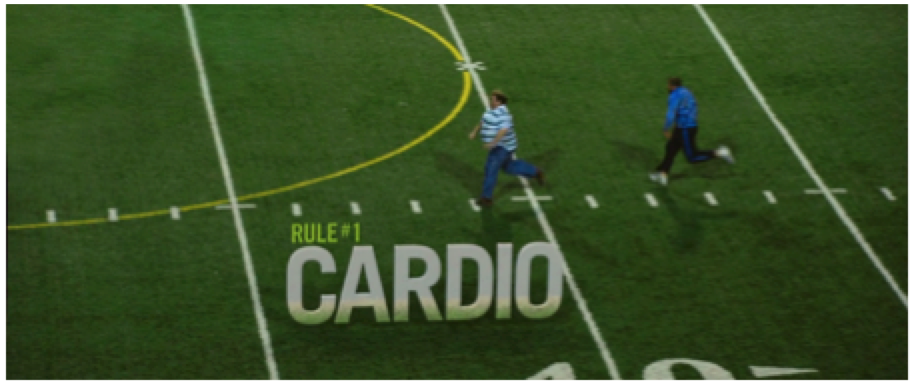 Decision making is a major factor in determining whether a player is good in all sports. Tom Brady was one of the athletes who tested poorly in the draft combine for athleticism yet he is widely regarded as the GOAT in NFL. His ability to be able to make decisions in hundredths of a second whilst under pressure is extraordinary. This is one of the most neglected aspects of fighting/self defence when it comes to programming training drills. I refer to fighting as high powered chess with massive consequences. You need to think under pressure in a high stakes environment which is a tough thing to do particularly when arousal levels are high. Basketball even though the negative consequence is minimal you do have to think and process whilst under physical & mental pressure, you need to go from gross motor, strong movements to finesse(fine motor) when it comes to shooting the ball etc Combat sports exhibits the same. Self Defence may be different as we are lead to believe fine motor skills aren’t as prevalent. An area that I have been speaking about a lot lately is processing skills. That is the ability to be able to see a stimulus and work out a response and finally put it into practice often referred to as ‘reads’ in basketball. This is huge in fighting also, with split second decisions and reactions needed to be carried out swiftly, that’s a tough and often neglected skill. Most martial arts training is concerned with closed skills ie isolated movements. Rarely do we see the drills being open for the fact that success levels decrease and that’s too big of a hit to people’s ego to not have success. Both fighting and sports do not take place in a vacuum so why train it that way? Even though I’m not a great tennis player I believe that if I had to return serve off the world number 1 & he was limited to serving to my forehand side at a particular pace & depth I would see success. Let him serve the way he would in a game & I’d have no chance! A number of other sports science principles that apply to fighting that are evident in my coaching stemming from my studies in sport psychology include anxiety and arousal management through cue words and a variety of other means. Concentrating on the right aspects at the right time can be learned. More of this in a future blog! This season when we had trials for our team we selected young men who had the ability to make decisions themselves, those who didn’t need explicit instruction, this made coaching a lot easier when instinctively they did a lot of the right things and were in snyc. That’s what I try to achieve when coaching self defence, gear peoples current skills if they are useful and accommodate for their individual differences. Some people prefer to strike, others to clinch or go to ground so rather than try and change that we steer it where it needs to go. Being ambidextrous is advantageous in both. You are at an advantage if you are equally effective with either hand/foot. It benefits in both to be able to use the hand that the opponent dictates you use. The concept of counters is prevalent in both. It’s kind of like a chess game. You have a move to which your opponent has a response, you need to build drills and the ability to counter all the possible counters. That’s the way I approach fighting as well. If your opponent does A we do 1 if they do AA we do 2 etc There are no certainties as there are so many variables here that we cant have one solution to every problem, there needs to be room for variation. PLAN B We had one player who was exceptionally athletic but didn’t have a vast skill set. He was able to dominate smaller, less polished opposition with his physicality. As soon as he came up against someone equally as physical or super skilled he did not experience the same success. You always need a plan B. Your plan A which is generally your go to move can work a lot but it will not work all the time particularly as the level of competition or ability of your opposition increases. This is more accurate for combat sports whereas self defence is more about overwhelming your opponent with ferocity and ‘Constant Offensive Pressure’ or GLF. In a self defence altercation you do not have the luxury of going to your corner between rounds and having your fight strategy analysed. In the ring/cage you need Plan B & maybe C & D. In fighting for example your strategy needs to change based on the opponent. This was one of my biggest strengths in combat sports, I love to use my hands, if someone I fought had better hands than me I could change it up & kick or clinch, I could adapt. As a coach players need to adapt & so does your team offensive & defensive sets again all based on the opposition, not the script in your head. There is a myth in the self defence world that being angry will make up for your lack of skills, that mindset overrides everything. Being angry may conceal fear & often pain but if you suck, you suck, its not turning you into Mike Tyson, the Hulk is not a documentary! It may assist in some aspects but not all. Same with basketball, I remember playing a grand final against a team who had a lot of support. Their cheer squad were heckling us badly & it fired me up. It put me off my game, I was better at the gross motor aspects of the game ie running, jumping, most things physical and I got worse at the fine motor movements such as shooting as well as decision making. Did it make me a better player? No, would it make me a better fighter? Probably not, it may improve a couple of attributes at the expense of others which are arguably more important. Game Speed My mantra that I said over & over was ‘game speed’ The team would use that phrase when doing impressions of me because I said it so much. Whenever we would practice the boys would slow down to ensure they got their shots in. I would stop them and say if that was a game the defence would’ve have come along & stopped that. This is identical in Self Defence/Martial Arts where people train slow & feel they are being productive. Sure you slow it down in your skill acquisition stage but that’s it. Once you have it, it has to be performed at the right speed, otherwise its just lazy & helping you achieve success in training but not in the game/real situation. This is where this whole knife defence training is divided, in one corner is the ‘technique’ guys who can get any number of things to work once the intensity is dialled back & refuse to train it at the right speed as they know their system will come unstuck. In the other corner there are very few of us, those who are interested in the truth. Self Defence and/or fighting needs to be performed at ‘game speed’ or you are in for a rude shock. I kinda had the last laugh with my team, even though I was very disappointed, when we played a really high level team. Our field goal percentage was significantly lower, we made many more errors all caused by, you guessed it the game speed. Better opposition gave us less time to do what we wanted, less space and less room for error. Hopefully now they realised I was right all along. Training should be harder than the event, its easier to lower the intensity than raise it in your time of need. Lastly people claim self defence hard skills to be skills that you only have to brush upon to be proficient, this couldn’t be further from the truth. You will get an understanding but just like in basketball you need to work at it to improve. The more you put in the more you get out. This is why I say over and over we must apply sporting principals to our Self Defence training where results are everything. If we are altering and researching the best means of getting a ball in a hoop then why on earth aren’t we being equally as meticulous when it comes to self preservation? As a self defence instructor I often wonder if it’s a pointless pursuit. I mean we teach an array of concepts that are good in theory but when it comes to the crunch, are we actually presuming too much to expect our students to call upon our teachings? Do we have it all backwards? Will it only help certain people? Are we going against the human condition? There are extreme examples reported daily of people engaging in behaviours we class as common sense and I’m not sure we can assume these individuals can be classified as untrained. Please note it is not my intention to victim blame, I’m only pointing out some examples that illustrate my point, who knows my response could be similar. In my home city of Sydney in 2017 in the early hours of the morning an individual entered a 7 11 carrying an axe. Yes, you read it correctly an AXE! Now in my head someone carrying an axe into a store (except a hardware store!) would capture my attention, I would acknowledge it and be somewhat concerned. The others in the store continued about their business, even turned their back on the individual and watch the video to see what happened next. I was sent another video a while back of a terrorist knife attack in the UK (I can’t find it anymore) that was the catalyst for this blog & this line of thinking. The assailant had a large kitchen knife and made no attempt to hide it, it was there clear as day. The assailant walked approximately 30 metres towards his victims and they froze, they made no attempt to move, appearing to be in disbelief and made no resistance to their demise. Again not meaning to victim blame but is this the human condition that we are kidding ourselves we can bypass? In my mind if I saw someone with a knife I would like to think I would be proactive in getting the hell out of there. I assumed that almost everyone would do the same but clearly it’s not the case at all. From my own experience I have made many, many errors when it comes to self defence over the years. After years of teaching verbal de-escalation and conflict communication, while waiting on the line at a supermarket a gentleman decided to push in, after telling him where the back of the line was and his insistence on being in front the ‘communication’ that followed is not something I’m proud of. What happened to the cool Acronym that reminds me of what I'm supposed to say? I wanted to tear this guy’s head off, I really, really wanted to. In my other work I spend time with people who are incarcerated for doing just that and there I was wanting to punch on over something so insignificant. I know I should’ve let it go, but I lost to the ugly side of my ego, I was on auto pilot and I couldn’t override it……..why? A few years ago when I was an accomplished combat sports fighter who had really good technique I was involved in a pretty violent self defence encounter. I can assure you that what ensued looked absolutely nothing like what I did in the ring. Even though I'm ambidextrous I competed and trained solely as a southpaw for decades, however whenever I got into a street encounter I always fought orthodox, why? I also did some things that clear thinking Jeff at this moment would not do & is not proud of, I was not in control, it was not a choice. Where did the training all go? I've had to drag mates off someone they were fighting to stop them seriously hurting the other person. These aren't hardcore guys, one was an accountant and another an IT nerd who this behaviour was very out of character and a huge shock to me, if these usually extremely controlled guys lost themselves in the moment what chance does everyone else have? This is not isolated to just me as many well trained individuals do the same. Have you ever watched fighters who lose their temper at press conferences or after the bell proceed to fight in a way that looks nothing like the way they trained or just fought? Below is a video from a grappling competition, once it became a fight rather than a competition both of their strategy/tactics changed significantly. Why didn't he do a Sukui Nage or some other Judo technique they'd spent weeks/months/years crafting? Ok still not convinced, this one is interesting: I’m pretty certain that Elijah wasn’t a kickboxer! All his time training would be spent throwing hands so where did this come from? Or this: Fighting with emotion or high levels of arousal changes the engagement significantly, there are too many examples to ignore. The more at stake or the more aroused (perhaps the more adrenaline), generally the less technique that appears. Another reason I discredit almost all the Knife Defence Techniques you will see, isn't it less likely as the consequences are greater? If I get into an empty handed stoush with some dude there would be adrenaline no doubt, put a knife in his hand and it would increase tenfold. Where’s the ‘muscle memory’ everyone speaks of? Isn’t the common rhetoric in this industry ‘You fight how you train’? I’m inclined to disagree these days. The way we fight is somewhat predisposed, we can only alter that if we are in control and therein lies the challenge of instructors. Another affirmation is the flinch response and various other survival mechanisms we exhibit, yes we do that but good luck trying to ‘weaponise’ it. Isn't it contradictory? You are taking an automated response that we cannot control and trying to program it ie control it? I know some people would argue that it doesn’t happen to them, if they train it enough. You can practice your katas or your flow drills til the cows come home but it will not change the fact that you will NOT do this in a fight. I always refer back to the video of a kung fu v karate guy who start off fighting martial arts for about 3 seconds & once shit becomes real…….. What does that mean for us? Should we not bother? One of the biggest challenges I have faced as an instructor is the disappointment of people ‘brawling’ and displaying little technique the moment we increased the intensity. Very little of the technical stuff we practiced appeared, it was sloppy and YouTubers would say it looks like a drunken pub brawl. Initially I took that as an insult, now I wear it as a badge of honour, that our drills look like one of the very things we are training for, that’s a win! There have been a number of commonalties whenever we have upped the ante, that's where our focus should lie. Most instructors are too scared to venture into this territory, the truth is very inconvenient. Before you claim to be a prophet of truth, take it to that place. It's the only way you'll know, it's that simple. Critique what you’re doing and how you do it. Instead of trying to fit a square peg in a round hole, adjust what you do accordingly. Look at the abundance of footage available of real world violence and try to create a system that thrives in that environment considering these human factors. Why are we intent on turning a blind eye to this phenomena to protect our system? Why are we so ignorant or conceited that we just presume what we are doing is good enough when clearly evidence suggests it isn't? It’s the same as being a flat earther in my opinion, people make bold claims with unsubstantiated evidence or anything of value to validate their position and dismiss anything contradictory (confirmation bias). It's ridiculously easy to find the truth, take your training there, detach from systems or techniques, didn't you originally get into this industry to help people?
,Knife defence training is probably the most difficult aspect of self defence that you are likely to encounter. So why are we making the solution appear easy? Why are we training it in a manner that doesn't do it a justice and why are we treating something we all know and believe to be of the utmost difficulty with a band aid approach? When it comes to knife defence training the vast majority in the industry are literally and figuratively, missing the point. A knife isn’t a complicated tool, there’s a sharp end and a blunt end yet attackers in knife defence videos seem to forget that, they always miss the point! It’s a reoccurring theme, once attackers get a knife in their hand they lose all ability to be able to harm someone! A knife is a supposed to be a force multiplier not a tranquiliser for those in possession! Just the other day I stumbled across a video that people were singing its praises but the attacker barely even moved the blade in the direction of the ‘victim’ You could get the same training effect gaffa taping a knife to a punching bag! The individual demonstrating actually missed a block & the knife still missed him.......miraculous. C’mon people we are better than that! Although evidence suggests that we aren’t. For every hundred videos on the topic I see, I can count on one hand the number that have something valid to offer. The one thing I hope you take away from this blog is not so much the technique, yet how to train and test it. I believe we do it better than anyone in this part of the world pretty much because we train it honestly, we have a low tolerance to bullshit and we can detect it pretty easily. We have a long way to go before I would make the claims that we are capable at defending against a knife, It’s still a work in progress. Primarily because it is so difficult, one error and you’re done. We have researched most of what’s out there & have found it ALL to be inadequate. Why do we know this? We take it to the level others are too scared to, a level that will likely show that what they are doing is ineffective, it will dispel many of their beliefs. They are more content to live in denial which sounds pretty unethical to me. Aside from this, the training actually hurts…….a lot! Anyone who puts in the hours in exercises or drills that resemble reality knows that mistakes will be made & success is hard to come by. That’s not to say in reality that you will get cut, you may get lucky, the person attacking you may be intoxicated or uncoordinated (just like the attackers in your videos haha!) I often say the people with real knife experience are in gaol (jail) not in dojos, learn from them online in how they attacked their victims, theres so much footage at your disposal. I like to compare knife defence & training in general this to baseball/teeball. Every time the instructor gives a directive you are essentially putting it on a tee, you are making it easier for them to succeed. I understand that you need to start slowly when in the skill acquisition stage however if your video has the agenda of showing how proficient you are at defending a knife then show that, without serving it on a platter. Every time the intensity decreases even by a small percentage its NOT reality. Every time you have prior knowledge of what the attack is going to be it’s NOT reality. Every time the attacker does not respond or react in a manner befitting someone trying to harm you, it’s NOT reality. Even lessening one of these equates to it sliding down the reality continuum. I used to watch Krav Maga videos of knife pick defence where the attackers are really swinging the knife hard at the attacker and I was impressed when they successfully defended it. Now I know they are not only putting it on a tee but telling fielders where to stand! Like old mate in the aforementioned video he knew which attack was coming, the attacker didn’t try to stab him in the slightest, there was no follow up and he still stuffed it up! The video above is from about 5 years ago & this was a sequence in a class. I was filming it and I was amazed at how skilled the guys were for barely getting cut. I was right to feel proud due to the ability of my guys to improvise with viable responses to the variables within attacks. However, lets be honest for a moment, the attacks were slow. Slow it down by even 10% it becomes significantly easier, this was probably around 70% so thats a big reduction, that's certainly lowering the bar quite a bit. There was an element of sparring partner syndrome in the attackers too ie hit then wait to be hit and the attacks were predominantly blade only. So is this training for reality………. Not really.
The same thing could be said for the videos above, about 8 years ago this time, if viewed through an honest lens, its way off realism. This video was from a last week where we had testing, the attacker has a marker. We called this the 'moderate' level not due to the intensity (more intense than what you're probably doing) but more because the attackers had limitations placed upon them. The limitations were that the attackers had to be fixated on the knife and were allowed to use the knife, clinch and grapple. Is this closer to realism? Maybe as the knife situations I have experienced and same with that of my team, all of us had tunnel vision on the blade. Would this more likely occur when confronted by your typical street thug? This is potentially a human condition that we may be kidding ourselves that we can bypass? Hopefully more exposure in training will limit this. However, due to the less options for the attacker a much higher percentage of success was experienced. That was great considering all of these guys have had less than a years training under their belts. The above was the advanced session. Attackers could not only use the blade but kick, punch or whatever they wanted to make their attack successful. I made it a competition making their goal to stab unlike the attacker in video I keep referring to. There was an incentive to 'kill' your training partner & and instant win for drawing a dick on them! So you're probably watching this thinking these guys aren't that good, insert the my styles technique here ____________________ would work. But I promise you, unless you get super lucky and the stars align it won't. The people featured here & other clips not shown have a wide variety of backgrounds from differing arts & even professions where people assume they have the answer to violence. Some attempted to control the knife hand , some tried to do a version of a simultaneous block and strike, others tried to strike through the attack, some initiated takedowns with an effort to grapple and some went in with no strategy per se. The results were not pleasing, none of them addressed the issue in every scenario. What we found to work was the person with the ability to improvise and switch between all responses, (most that have often aren't covered in a structured system) as dictated by the attacker had more success. If it doesn't work here in this controlled environment then it most certainly won't be successful when its real. We found that a bigger stronger faster athlete (like in all combat) has a distinct advantage. We have given a lot of thought to whether this level of training is going above and beyond what may be required in a general real encounter and we have decided that we should be trying to deal with worst case scenario, its better to address it in training then to ignore it hoping it doesn't happen. In summary I think the worst thing you can do in training drills is place limitations on the attackers. As soon as a skill becomes closed it becomes easier, an open skill is a lot tougher and what needs to be developed. If we take out the decision making element in training we are making drills ridiculously easy & far less useful again if you are at that stage in your training. Limiting responses limits growth, limits improvements and limits your chances of success if it is to happen for real. Processing skills in the moment, being able to decide upon the required response to a stimulus is vital in fighting. Fighting/self defence does not take place in a vacuum so we need to stop training it as if it does if we truly seek the truth.  Jeff Phillips In almost every gym worldwide you will find the RPE table pictured above: This is a simple chart that is used to give a subjective measure of exercise intensity based on the subjects own experience, how they feel both physically and mentally during bouts of exercise. As a trainer it gives the clients perception of how hard they think they are working as opposed to an objective measure such as a heart rate monitor. Problem is it is often doctored by the lazy exerciser who simply does not want to be extended beyond their comfort level. You know the type that grunts a little louder in an attempt to give off the impression they are working really hard. This has unfortunately crept into the self defence world where instructors actually perceive they are teaching effective techniques or sparring hard when clearly they are not. They are no different to the grunting exerciser, problem is that not many of us, from the general consumer to even seasoned professionals cannot see through this charade and its hurting the industry. I believe we should have a similar simple chart or tool to measure the ‘pressure testing’ that people use to verify an ‘effective’ technique. Some of the ‘battle tested’ techniques that we see can’t really be verified and when clips claim to be doing just that they need to be scrutinised. It can also be used to help measure the intensity of ‘sparring’ or ‘scenario training’ as there is a distinct difference between pressure testing and drilling. We need one that cannot be doctored by the practitioner through concise guidelines. A major point of difference is that instead it being based of the practitioners perception it needs to be made by a neutral third party irrespective of experience. Why I say they don’t need to be an expert is the table should give sufficient criteria to help them make an informed critique. This may assist the practitioner if they are willing to take on board constructive criticism and also the uneducated, uninformed potential martial artist to make a somewhat educated choice as to where they train and if their instructor has an idea. The idea of assessing techniques is tough particularly when they are out of context, they need to be isolated at some stage & if you are demonstrating a particular technique it is essential. For me to be a believer there needs to be more. I need to see it work under the same stressors that you would find in a real scenario. That is it needs to be tested with extreme pressure in sparring/scenarios to be considered in the ball park of reality. Granted it’s impossible to achieve this safely and lawfully all the time, but I have to see it or experience it in this realm or further testing is required. That’s the big thing, if they fail this eye test it doesn’t mean it should be scrapped, it means further testing or exploration is required. For example a parry of a jab can be taught with compliance and in slow motion however its pretty easy to gather evidence that it works under pressure, namely boxing, kickboxing & MMA fights as well as CCTV footage. Also there is a time and a place to isolate skills and power etc particularly early on in the practitioners journey. So when looking at a clip these are the four categories I have come up with in their simplest terms that can be used to determine if something is being ‘pressure tested’ and effective: 1 Fighting Movement I purposely steer clear of giving things a vogue name and call it fighting because that's what’s happening. You can try and categorise it but once it turns physical you are essentially fighting. Fighting for your life, fighting for your ego, whatever it may be no matter how trivial. Just like a fight the bad guy should be applying the attack with corresponding movement. That is at the right distance with realistic power and speed & with realistic responses. An issue I constantly see here is that of forward momentum. When people are actually trying to hurt you they are moving forward, not remaining stationary, its dynamic, unpredictable & rarely goes according to the script and it doesn’t flow. This is where a lot of the on the spot drilling commonly practised becomes impractical, feet move. People move, especially emotionally charged people. The clip below has little application in fighting in my opinion. 2 Emotional State When you are in a fight there is emotion present, that emotion differs from situation to situation and it may be present in the form of fear, anxiety, anger to name a few. The only people who don’t have this are the supremely confident, those desensitised to violence or under the influence of a substance. This is why when an instructor says to relax when striking or general training I question their knowledge & experience. It’s an unrealistic expectation. Every time I’ve thrown hands at someone be it ring or street I was never or could never be relaxed (sparring aside). Maybe I just haven’t achieved that state of Zen? For training or sparring to be closer to the reality realm there needs to be a consequence or a fear of getting hurt (not injured). Touch sparring is useful but if that's what you consider pressure testing you are way off and when intensity hits 10 and all you’ve ever trained is a 5 you will be in for a nasty surprise. Protective equipment comes in to play here, if you always spar with headgear on you will be in for a shock the first time you feel the superficial injuries a helmet protects you from. Not many hobbyists will be able to see and feel their nose being splattered across their face and have the grit to continue. Take the gear off & you will see your anxiety rises in relation to the risk of injury. You’ll fight very differently. The same happens with the power allowed in shots, sparring at 90% intensity will prevent you from doing a large proportion of things that you can at 50% intensity. Same with the environment, train on concrete, in an office etc and it will change your strategy substantially. This type of training is not encouraged all the time, but has to happen some time. 3 Compliance The bad guys actions are not there to support the technique or to enable it. Their response should be congruent with that of a real attack. People have the ability to solve problems on the fly, they will not freeze or continue an attack that is unsuccessful. They will adapt & change & their response based on result. To dumb that down if someone has a free hand they will most likely hit you with it! Put yourself in the attackers shoes, what would you do next? What’s your motivation? What are you trying to achieve? So many scenarios that are drilled are pointless, there is no plausible scenario where they would happen on our planet! One often overlooked aspect of training is that your opponent will dictate your tactics/strategy rather than you or the plan you mapped out in your head. It usually goes off script! Same with expecting them be rendered useless after your technique, you should assume the technique didn't go to plan & that there must be a continuation of sorts. I remember an instructor getting his ass handed to him reach up & touch his sparring partners face & screaming “I got your eyes’ then walking off like he won that battle. We should do the opposite, ok maybe I was able to poke him in the eyes but then what? Maybe it didn't have any effect at all, maybe it made the attacker enraged, it’s safer to assume it didn't work then to assume it did because again in a real encounter you do not want any surprises. 4 Restrictions Every time you place a restriction on an attacker you are slipping down the ‘reality’ continuum. I know when demonstrating a specific technique essentially you have to however it has to be able to work when there are no restrictions. For example it is not justification that your icepick knife defence works when you practice it in isolation regardless of how hard you go. If you have prior knowledge of what the attack is going to be it takes out the processing skills that are needed to identify the incoming attack and to select the correct response. This is a huge misunderstood part of combat and self defence. This is where we need to draw parallels to sport. Being a basketball coach I prefer a player to be able to make ‘reads’ in the moment that is adapt due to the circumstances rather than be a robot moving only where and how instructed. This separates basketball players & also separates fighters/self defence practitioners in terms of ability, those who are able to make the correct read are generally better. Fighting is unpredictable and particularly fighting on the streetz where anything may happen ie weapons, multiples you know the usual suspects. Your ability to be analytical in a high stakes, high pressure & high speed environment is imperative for your success. If you can’t process visual cues in a hundredth of a second you’re in trouble! Its also imperative for critiquing validity of concepts and techniques. My knife system changed dramatically over the years due to this. Everything works when you can predict what’s coming. When we started allowing the attacker to not only use the blade but also to strike and wrestle it was a catalyst for necessary change. It made the majority of knife systems that are out there useless. So lets take a look at my new chart & how it is applied: Watch a video & every time you see an error you take a mark off. For example if we were looking at compliance you see the attacker freeze after their attack you take (1), their follow up response is unlikely they lose another point and so forth. If i was doing this in one of my teacher roles this would be considered hard marking but in this context it should be. The formula would look like this 10 - (sum of mistakes) = Put that number in the renamed chart 'Rate of Perceived Resistance' below: I've also made another version after scrolling through some online forums I figured it would have to be made even simpler & rather than give a number a meme would resonate with that crowd: If you are on the path to seeking the truth or you claim to be teaching self defence or effective techniques, someone associated with you must be training in between levels 7-10. This is what I refer to as the truth zone! Not everyone can or is prepared to train at this level and they don't have to, however the techniques need to be verified at this stage by someone. I don’t expect my kids to take training there, same with my Women’s or beginner groups, however, my group of senior students do and it filters down. They test it for and on behalf of them. The other thing is that it needs to be a common occurance, that is you see this technique or concept working a large number of times in the truth zone. One example in a street fight isn’t enough. You want a large sample size for justification. For us it was around 5 years of seeing the same outcomes & even then we were skeptical and had to up the stakes hence the birth of King of the West. This is not to say there is no validity to training at the other ranges, there absolutely is but don’t make the mistake of thinking that everything you get to work at 6 will work at 10. And please don’t be training at 3 thinking you are doing anything other than art or tradition, or you deserve to get crucified online because you will get crucified on the day you need to rely on said skills. Also there are no free passes or exemptions here regardless of your surname, training group if you have a weapon or whatever. We need to call a duck a duck but there also needs to be reasoning. So many credentialed instructors put out material that is utter fantasy and because of who they are their sycophantic following endorse it. Some instructors that I know and respect share some utter garbage! Theres no reason why anyone can't take them to task if it doesn't fulfil the criteria. Again this is a work in progress and its a start and hopefully someone with more time & intelligence can expand upon it!
The internet gives everyone a voice, sometimes this is a good thing, mostly it isn’t. Some people who do have a platform for being good at one thing should really think carefully before crossing into other realms, Kyrie Irving & his flat earth discussion springs to mind. A huge problem that it has created is that people are confused as to who to listen to and whose opinion is actually worth noting. This line has become very blurred in recent times. If I need some info I’m savvy enough to go to someone with credibility in their respected field, I’m starting to think I’m one of the minority, this could not be more apparent than in the martial arts industry. Most people just like in the above video above assume the action of others in an attempt to be just like everyone else ie to follow the masses. This is refereed to as social proofing. It is based on the idea that since so many other people behave in a certain way, it must be the correct behaviour. I’m guilty of this with food, if I go to China town where the food may be described as a gamble, I usually go to the busiest store making the assumption the food must be a) good & b) safe, with no idea as to whether this is the case or not. I inadvertently just follow everyone else. Quite often you will see a controversial post on a forum & the masses oppose it regardless of the how persuasive or even conclusive the argument may be. It’s easy just to go with the majority, less headaches, less backlash & besides I’m sure the more people who share this opinion automatically mean’s its right, right? My year 9 teacher talking about Robert Frosts ‘The road not taken’ finally makes sense! Marketers ‘reinforce’ how good their product/service is by enlisting the help of a celebrity. This is why anything to do with Bruce Lee is accepted by almost everyone when the discussion is martial arts, even if his words or actions appear dubious. Having said that they have seen him defeat a myriad of people, does it really matter if it was a movie? Appears not to, people seem to have trouble distinguishing between reality and fantasy. Please note: the following clip is from a MOVIE!!!!!!!! Then there’s other ‘celebrities’ or names that people tend to respond to & that’s the ‘Influencers’. You know the girls of instagram who have little knowledge of what they are selling, they just so happen to be genetically blessed. I’ve seen this too many times where I encourage a female client to get on the squat rack but they’d rather pull out the booty bands to work their glutes because of all these ‘influencers’. But hey they have a million followers so it must be legit? The same with martial arts, there is a subculture of martial influencers out there with huge followings, but if you scrutinize their work and their offerings you may see that it lacks validity. Perhaps they are just good at multimedia and present well, they look good on screen with a good presence, with excellent cinematography skills & post production editing but is that really enough to classify them as an expert? Some of them turn out content continually to feed the masses and to keep riding the wave of attention however quite often there’s little quality control & they are once again extending beyond their range. Are we tuning in to a talk show to watch the host or their guests? The general population is easily seduced by these approaches whereas I wouldn’t care if it was written on a piece of toilet paper, if its good its good! It reminds me of culinary presentation to me the pic below has no substance, this is not a mouth watering dish but it’s all in the presentation right? Another phenomena is the ‘halo effect’ coined by psychologist Edward Thorndike. This is where we make judgments based on our overall impression of someone. This includes all the aforementioned such as they have been on television or in movies, the manner in which they have been portrayed or their social media presence. This is where presentation is key, it pays to be good looking! Or you can do what is quite common in this industry and lie through your teeth to create a persona that would be tough to live up to! I’m sure you could create a lengthy list of candidates!
Others increase their social media presence or their perceived level of ‘expertise’ by pandering to their audience. One video is well received therefore lets stick with that formula. It's the audience that keeps the views and likes up, the sales high and the monetary contributions, and if you upset them, they can just go elsewhere. Let’s keep our opinions in line with theirs so they keep coming back and bringing all the dollars with them. This is why it’s important to look at the industry through an objective lens, look beyond the superficial. Watch the next UFC with the commentary off, you may see a totally different fight!. Same with videos/blogs and anything you see, shut out anything that may cause bias and judge it for what it truly is. It's ok to disagree with someone if you have a valid argument or reasoning as to why that is, this should be encouraged. You have that same right to an opinion, just use it wisely! Head movement is an under-utilised yet essential skill in Self Defence training. Its one that probably isn’t given the time & attention it deserves, particularly if you are training in a holistic manner. It is understandable that it isn’t covered in a short course but for those who are more than hobbyists it needs to be part of your arsenal. Head movement can be divided into two categories, defensive & general. Defensive head movement refers to movement in response to a strike such as slipping or bobbing & weaving. General head movement is head movement that a boxer would engage in whilst squared off, so as to be a moving target or to set up offense. In self defence training people generally say that general head movement shouldn’t occur because once you get in that posturing zone you can turn and run. This is true to some extent but first – can you run? Are you in shape? Do the circumstances allow it ie Are you cornered, do you have significant others with you that you can’t leave? Are you in this situation due to employment? On top of the obvious what happens if the initial engagement occurs, you separate & they come back at you? I’d encourage general head movement without a doubt! It’s a great 2nd line of defence. Aside from use in actual real Self Defence & combat sports examples, how many times have you seen something out the corner of your eye that is moving toward your head & you instinctively move out of the way? As a sports coach I’ve done it many times dodging a ball that’s been thrown or kicked to me when I’m not ready, particularly when I’ve picked it up at the last moment & I didn’t have enough time to get my hands up to catch it. On that note it’s not always possible to get your hands up in time to defend yourself for a variety of reasons. 1 Sometimes you just don’t have the proximity. Blocking is useful in the right context just as covering is also, but what happens when you pick up the movement a touch too late? Your only choice like the examples above is head movement. 2 We all know the 90degree rule & it definitely has validity but what happens when the attacker is much larger than you? If you are outweighed significantly by your attacker it may not hold up even if the stars align and you get the perfect structure it can fail you, particularly if they have greater momentum etc. Force on force isn’t always the best option, particularly if you are lighter. Lighter people increase their chances significantly by being able to move, like a matador. It’s how I got by! Also speaking strategically, if you do successfully block the shot you are halting their momentum at the expense of a portion of your structure, so they still have the advantage – and please don’t talk about blocking and striking simultaneously. Even though it occurs occasionally in the boxing world making it the premise of your defence shows you have no experience in fighting. You do any 2 tasks at the same time you are doing them both inadequately, particularly at the speed required. If you do successfully block the attack remember the next shot will proceed immediately – it’s not like the technique workshops you commonly see where an arm freezes mid air. Blocking that first shot would enable them to fire back immediately due to stopping their momentum. Whereas ducking successfully opens up so many possibilities, escapes, counters…so many options. Getting out of the way buys you time. 3 Head Movement can still work when you are holding something. I have had someone take a swing at me while carrying shopping bags and on a basketball court holding a ball (more than once!). I have seen Youtube videos where people even throw a punch at people holding an infant. You can’t always just drop what you have and then get back in the game. 4. Head Movement still works if someone has hold of your hands/arms. Maybe they have your arm and are hitting you, perhaps the aggressor’s friend or maybe your friend or significant other has hold of your arms also. There are many scenarios where this is a possibility. 5. Head Movement still works if you have an arm injury be it in a sling or in plaster. 6. It can also be applied if they have an implement both bladed or blunt. Lastly it is not always appropriate to have your hands in a defensive position. I work in a field where I’m trying to gain the trust of some historically violent people. If I have body language that conveys nervousness or fear or even that I’m ready to fight this would nullify any progress I have made and potentially make me a target. Most conventional, under the radar RBSD stances may have this effect. This is also the case whilst I’m walking through these areas, walking with your hands in a tactical position makes you look a bit socially awkward maybe makes you a target. I’m probably an exception to the rule here but I don’t want you to look like an oddball for the sake of being tactical. Imagine going on a first date insisting on sitting with your back to the wall, locating exits and potential risks, scanning the environment with your head on a swivel. When it comes time to pay you take your ridiculous coin pouch that you doubles as a cumbersome weapon off your tactical belt to pay dinner I almost guarantee you won’t be getting laid! Why not train your body to be a functional weapon, you don’t need to carry a tool that makes you look like a tool! HEAD MOVEMENT! I’m not going to discuss how to do this you can go to any reputable boxing gym the world over and they’ll show you but what I will add is to make sure you train it from both stances including disadvantages ones with an emphasis of maintaining proactive structure. That is your feet are under you, you are in a position that you can initiate offence or more defence if required. So if head movement is not in your curriculum it is incomplete. Violence is a useful tool is the catch cry for many in the self defence /combatives industry and rightfully so. You’ve seen the inspirational memes posted everywhere. Violence is often ugly but on the odd occasion its a beautiful thing when used in the right context, such as a kid fighting off a bully, a woman fighting off a would be rapist etc. There’s a term that I would put on equal stead however it is always regarded in a negative light in this industry and that is ego. Ego is defined as ‘a person's sense of self-esteem or self-importance’ and that’s pretty damn important if you ask me. How many times have you heard the phrase leave your ego at the door? I say bring your ego with you because its pretty important, if you have no ego then you will be eaten alive in the gym and in life. Just like violence you need to be able to distinguish when and how it’s appropriate. Sure its wrong to come into a training environment and act like a douche trying to beat up everyone, but in a competitive drill I want people to compete, not lay down without putting up a fight. I love to see people in my classes put in effort & strive to be better than the next person, especially kids. Half the kids that are training with me are doing so because their parents feel they need more ego, they need to feel that are worthy of defending and that they shouldn't allow people to treat them like a door mat. Thats a lack of ego right there. I first started training because my ego motivated me to want to be able to fight if I needed to. Growing up in the environment I did lacking in ego would be detrimental. Throughout my training life my ego made me work harder than the next man, I would stay in the gym longer, practice everything at home & strive to improve. At 45 years of age I still do a minimum 8 training sessions a week, I hold my self to a higher standard than the average, its my ego that prevents me from getting out of shape and becoming one of those overweight, out of shape instructors who rely on their reputations rather than ability. My ego makes me ignore my minor injuries that are always there and continue to strive to be the best, I’ve had a number of pretty major surgeries and even if it may be a valid excuse my ego reemphasises its an excuse and to get back on it. Its my ego that has and will continue to help me in combat – be it combat sports or even self defence, it is my ego that makes me want to win & continue to so despite adversity, despite wanting to quit or choosing the simple path. My ego has picked me off the floor in a boxing ring and powered me on to victory after it looked like defeat was certain. My ego didn’t allow me to lose or look incapable in front of the large crowd cheering for the other guy My ego made me want to climb the rankings of fighters eventually making me a champion. My ego makes me stand up for myself, not allowing myself become a victim wherever my world shall take me. My ego makes me strive to have my self defence school rated as one of the best worldwide. My ego makes me want my students to be the best they can be and be able to dismantle anyone who may threaten them. My ego makes my quality control measures more stringent than my competition thus achieving the aforementioned. . It’s my ego that makes me actually strive to find the best methods of training and not taking short cuts because they are easier. One thing that all professional fighters and successful athletes have is a big ego, some outwardly so that they seem conceited ie McGregor, Mayweather, Mundine yet others such as GGG, Roy Jones jnr etc have the same they just appear quietly confident.
On the flip side ego has caused many problems for both myself and others. I should’ve walked away from a number of the fights and challenges I have been presented in my time but my ego stopped me, that was absolutely not the best course of action in some of those instances. My ego doesn’t allow me to network in the martial arts industry as it will prevent me from partnering with people who I am not philosophy aligned with even if it means a better pay day. The struggle is you need to know when to switch it on and when it needs to take a back seat, I’ve become better at this with time, the older I get the more control I have but it isn't as bad as advertised, in many instances its a necessity. I’m not shocked anymore from anything I see in the Self Defence/Martial Arts Industry. There is all sorts of crazy in it that it’s tiresome trying to change or amend it. One thing I’d like to address or challenge is the phenomena that I like to call the Milli Vanilli Instructors. If you don’t know who Milli Vanilli was, they were a band who had two guys with all the superficial assets needed to succeed, they were good looking, in shape, could dance, had all the charisma in the world. Problem is they couldn’t sing or play any music. They were discovered to be frauds that mimed their songs. Is the music really important anyway? In the Self Defence industry it obviously is not. You see there are a multitude of instructors out there who may look the part yet the material and training they present is lacking and we are ignoring the important part…….the music ie the training. It hurts me to see instructors held in high esteem & quite frankly when you see their training and it has no substance, if you look at it with a hint of common sense you can clearly see they are snake oil salesman. Who says you can’t polish a turd? I hear podcasts with guests with a sycophantic following & then I see what they do & its just so disappointing! Just before I heard you say all the right things & you give a backstory that should have taught you something, yet this is your training? This is what you pass off as reality? It happens all the time, I recently heard someone talk the talk – 'I’m an ex crim who turned my life around and teach from my lessons from a life of violence'. Problem is you are more of a criminal now if you take money from people for that nonsense you consider training! I suspect you survived your time inside by other means than being a tough guy. But its ok because what happened behind bars there is no proof of, its’ your word (you’ve earnt our trust!) and the gullible public hear the word gaol (jail) & they believe! This is not religion, you can ask for proof! Its not about blind faith! There’s probably about 3 or 4 backstories that are identical in this industry for those who have success. Military, Police, Security, Gaol I guess if you want to be successful follow the business model! Problem is I have worked security & currently in gaols and maybe I’m doing it wrong but if you treat people like people its not that violent a profession. In fact I’d go so far to say that the workplace made it less likely for me to use my training, It was very, very restrictive. I saw way more violence working as a school teacher & if I really wanted to be accurate the uniform below is what we should be most impressed with. Statistics show that worldwide, nurses are far more likely to be attacked than police officers and prison guards. Maybe some of the industry ‘pundits’ need to update their cosplay wardrobes and get a nursing costume! Perhaps do a TAFE course to bolster their resume! I can see it at seminars now ‘I loved martial arts growing up & I wanted a testing ground so I did 10 years in ER at Nepean Hospital’ That’s way more accurate than what I’m hearing. In this industry in general, there are a lot of people held in high esteem that really shouldn’t be if training, knowledge & ability are valued. It’s more about perception. Some adopt a WWE flavour. That is they are overly theatrical by stomping their feet and snarling as they hit pads/bags. Some actually hit people hard in demos whilst they are standing still and not providing any resistance. That’s a dick move for mine as a 10 year old could hurt someone doing that. To be ultra successful many lie through their teeth about their ability & conquests. People seem to appreciate ‘war stories’ as I have witnessed a well known instructor tell the same story with a different ending three times catering for the technique he was teaching at the time. He also went on to tell a story from a film as if it happened to him! The majority of attendees all lapped it up. Another ‘icon’ that has given himself a nickname & talks all kind of nonsense about how much of a bad ass he is yet looks like he should be searching for snow white with his other 6 buddies! Looking at him and some of his film he is or never was in any shape or ability to have been able to perform the feats he claims. His videos, which I’m sure he chose the best takes, looks like a blooper reel of poor athleticism and awkwardness. I usually don’t like to demean someone due to their physical characteristics/abilities but when you put YOURSELF on a pedestal built from lies you are fair game. He talks like he is Jorge Masvidal yet looks and moves like Danny Devito and yes, he has a cult following. So should we focus less on actual results and more on building a persona? Maybe perfect your 1000 yard stare? Develop an alpha portfolio of excessively masculine pics holding knives & guns? Maybe blur out the faces in group training pics to give off the impression that it’s a top secret gig with people so damn dangerous you cannot show their identity. Or maybe they are dentists? Joke explanation here: https://www.youtube.com/watch?v=CF2opel339U So what is it that people value? What are they key words that draw people in? You know what, on second thoughts I don’t really care, I for one wish to remain ethical. Coaching is about improving your athletes not your reputation. I put integrity first.
|
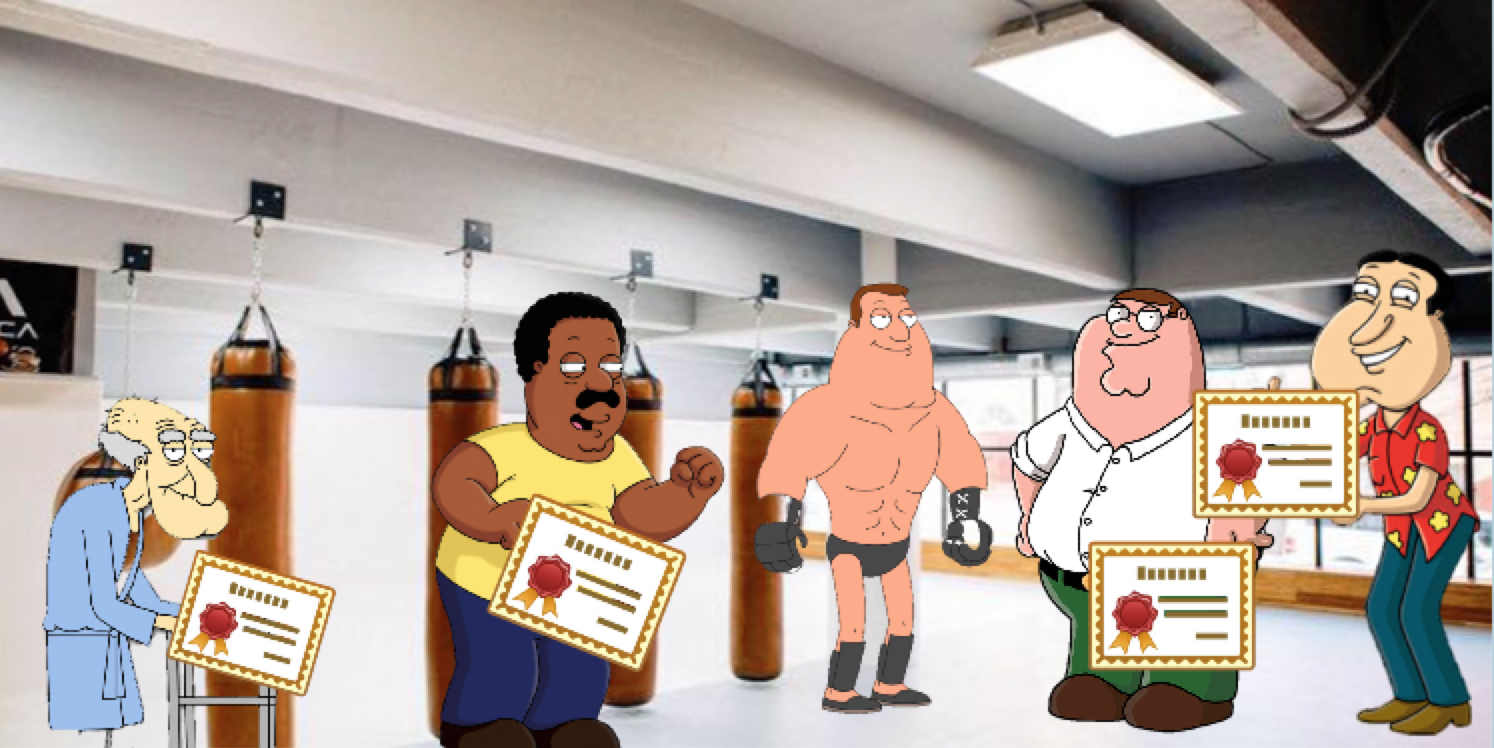
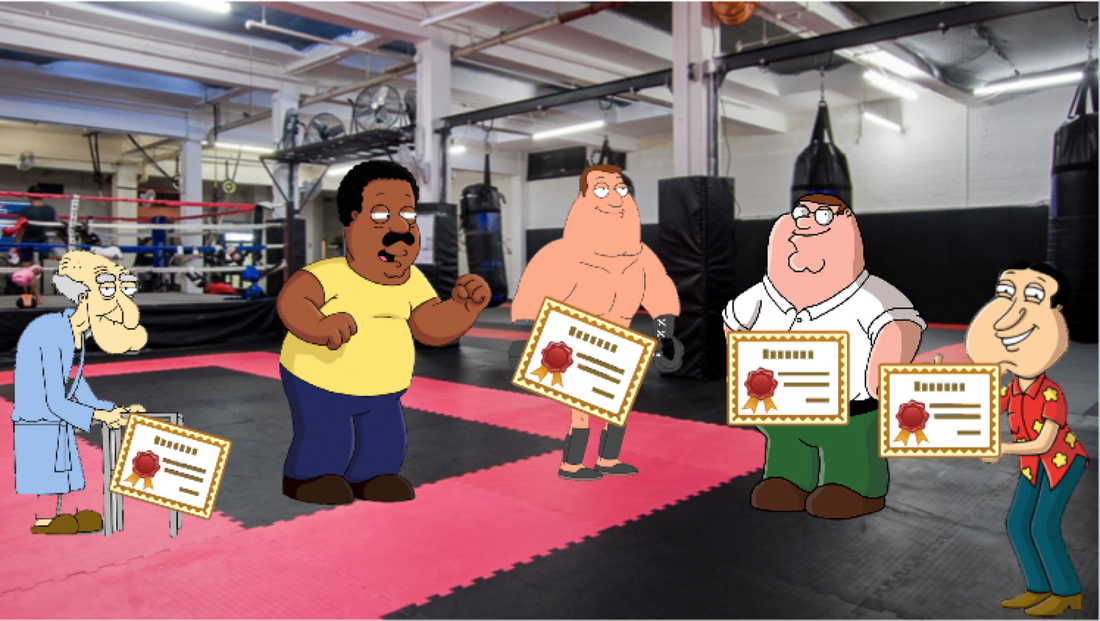
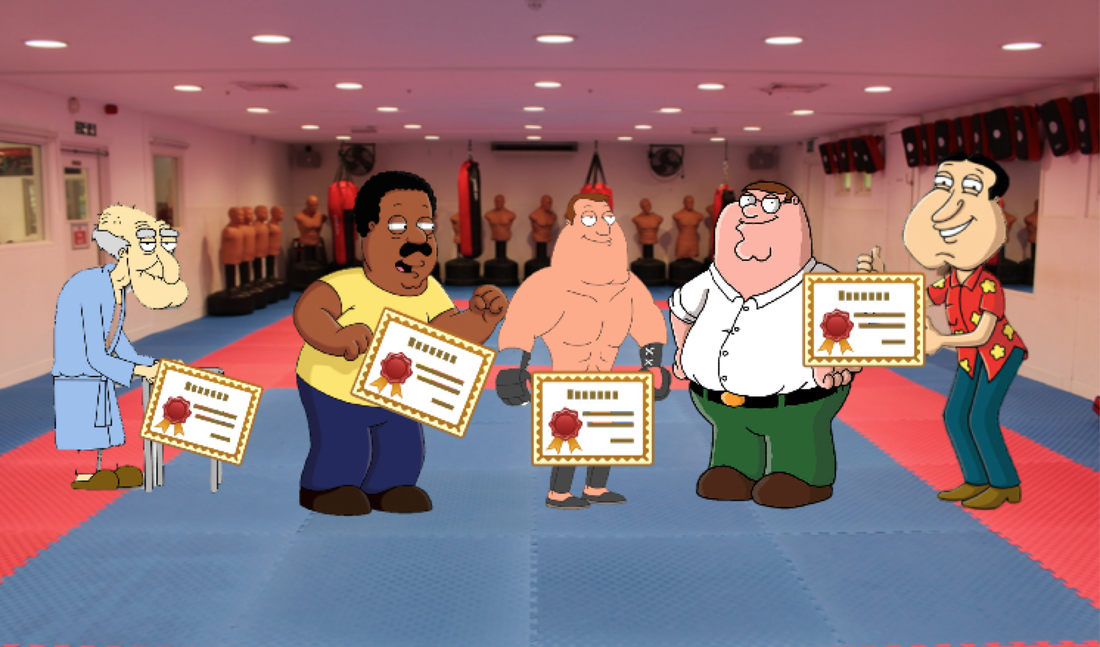
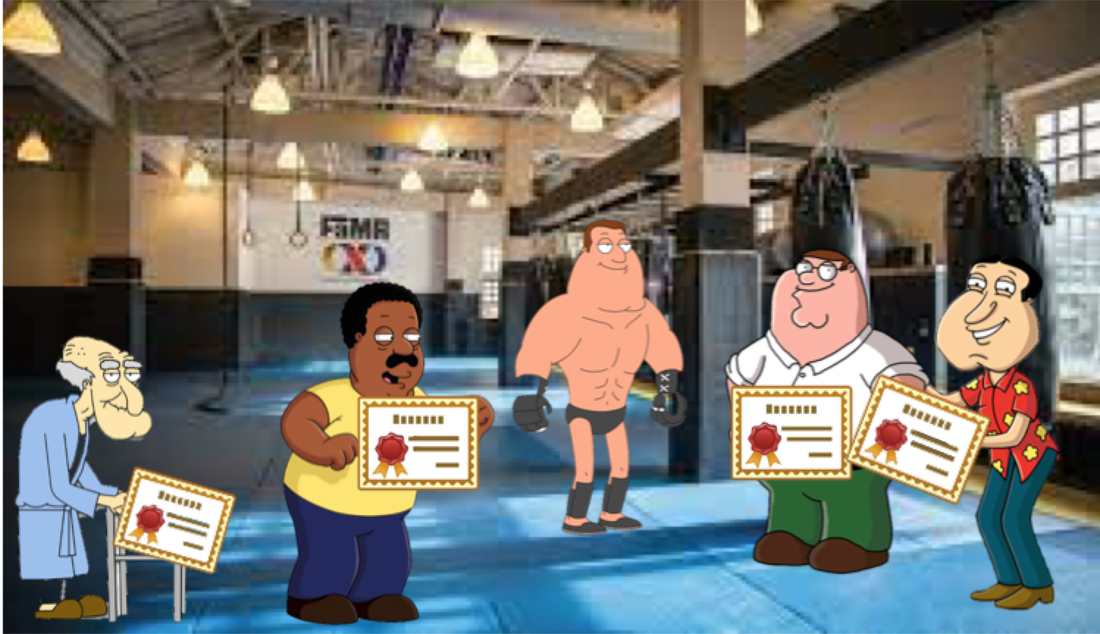
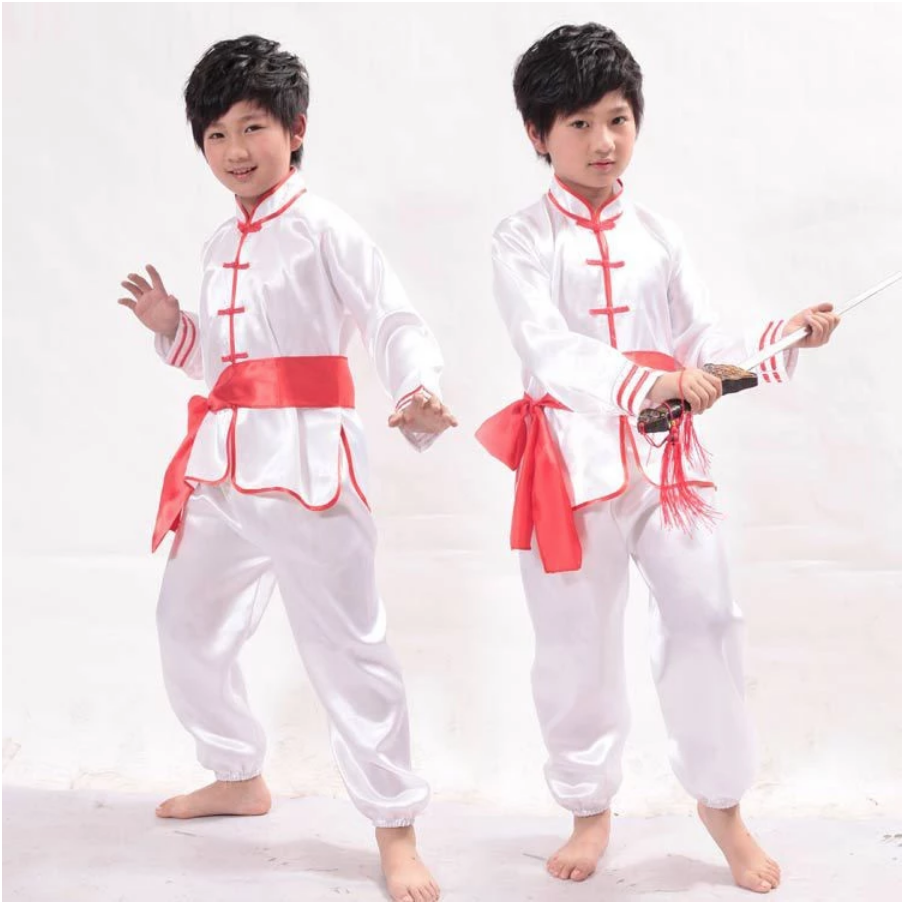
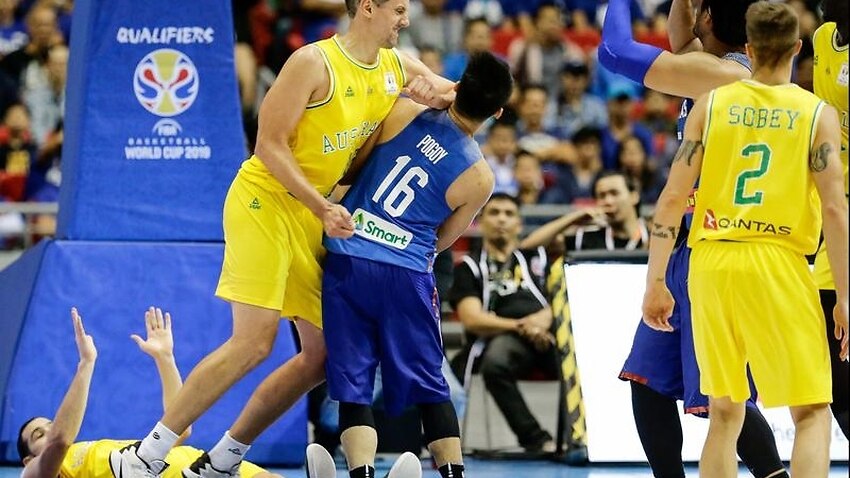
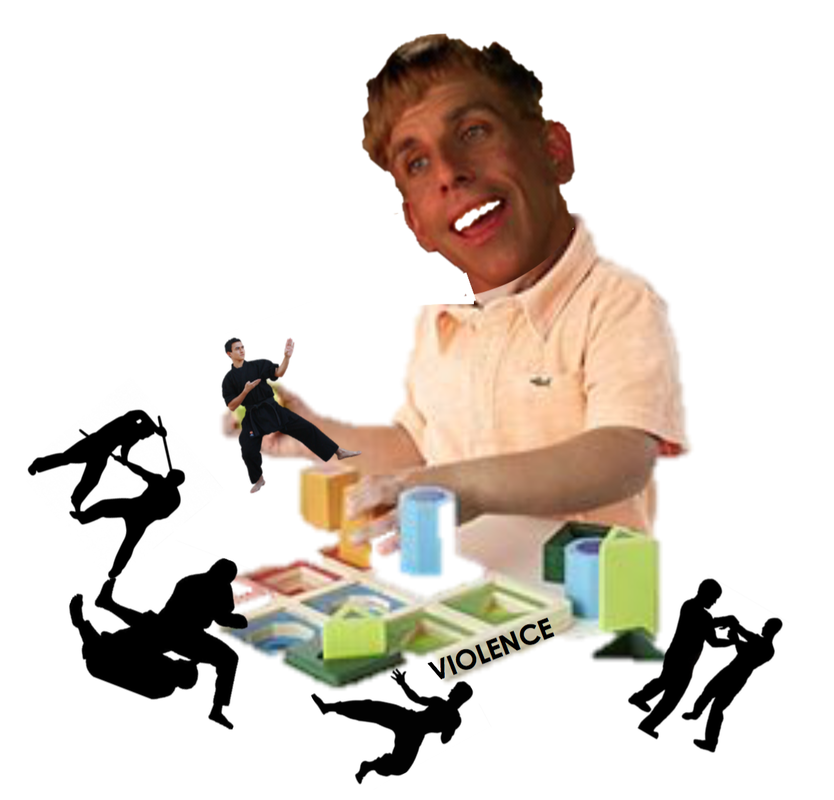
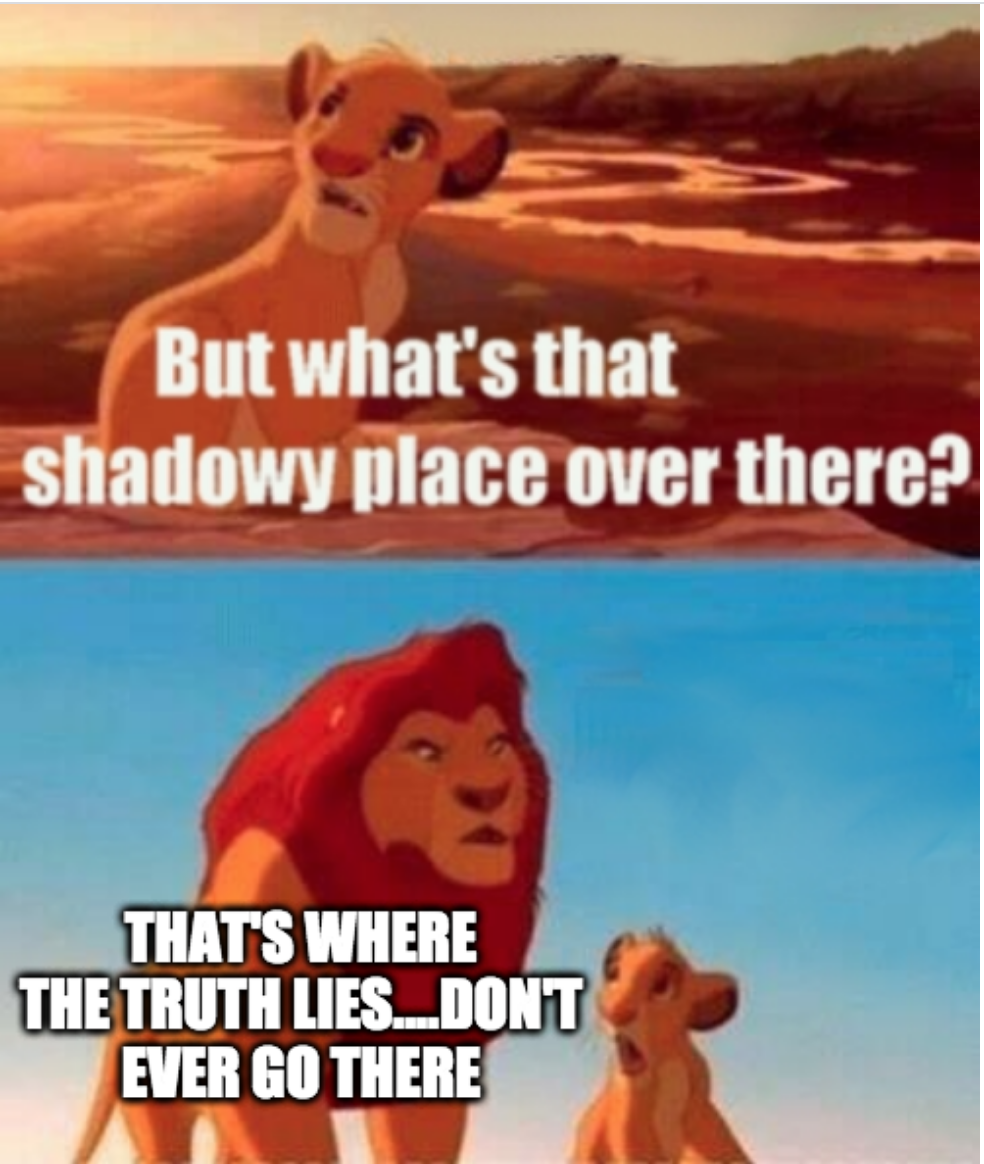
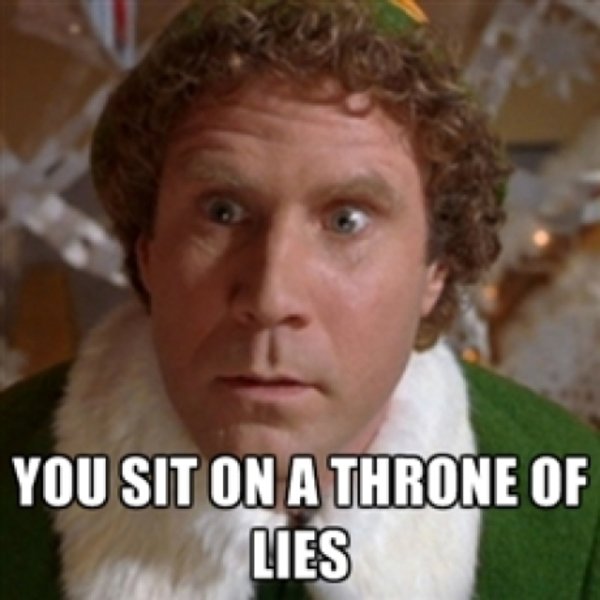
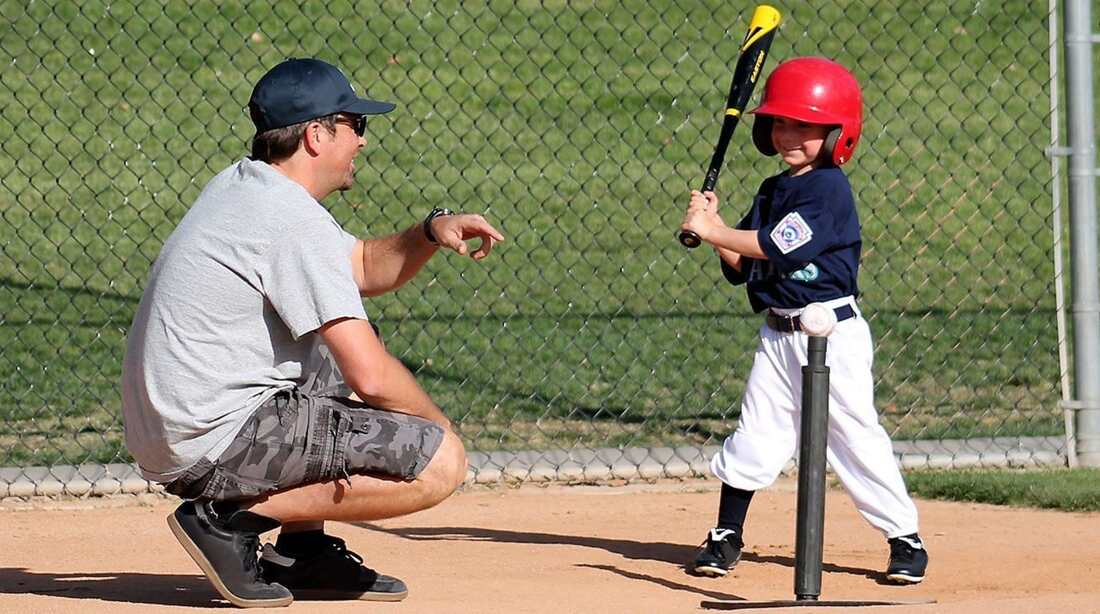
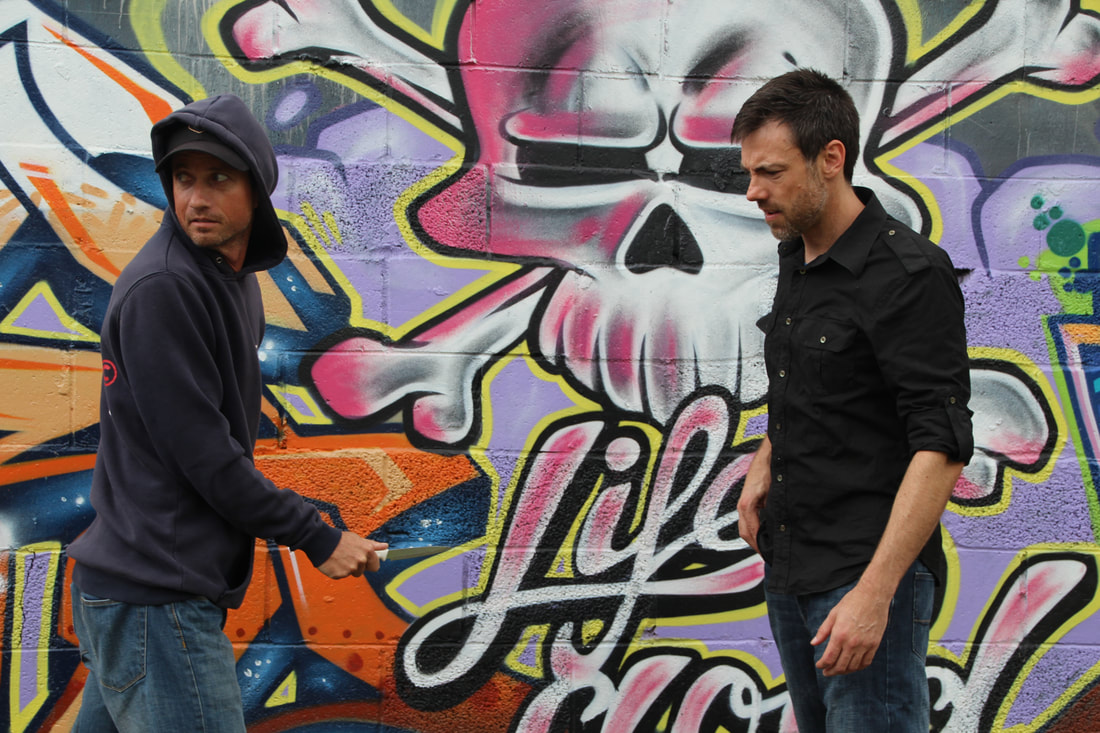
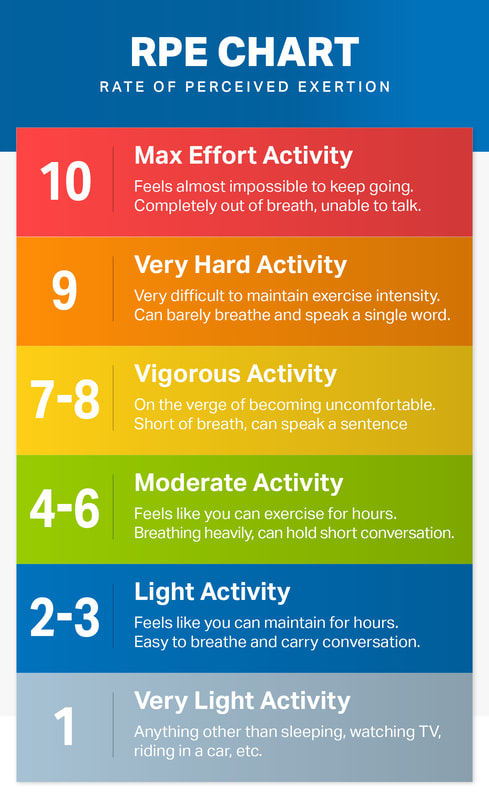
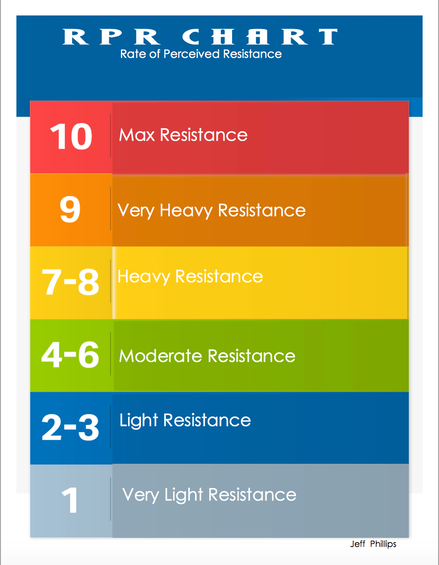
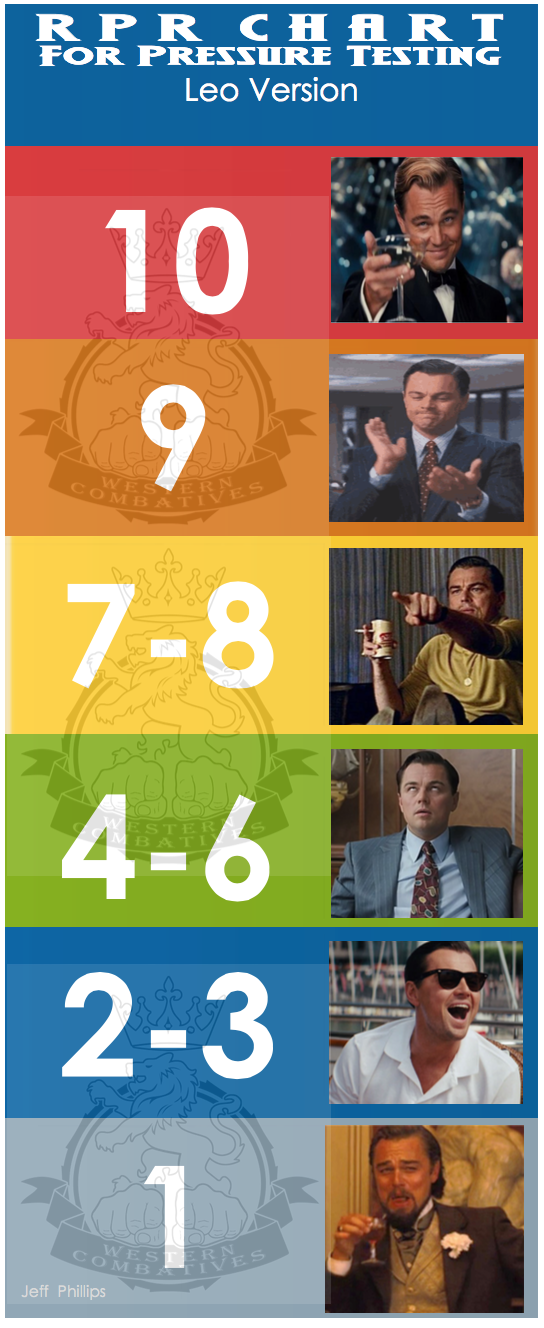
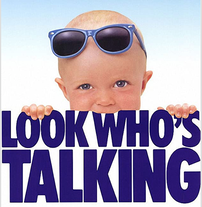
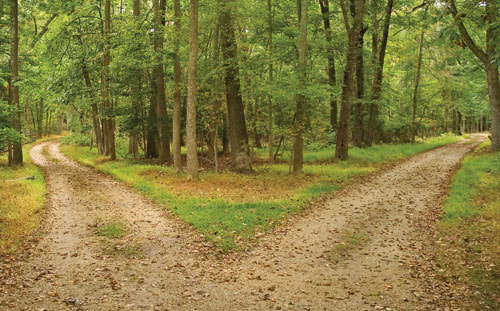

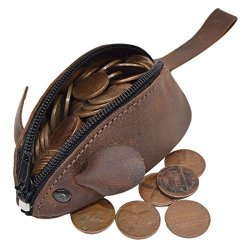
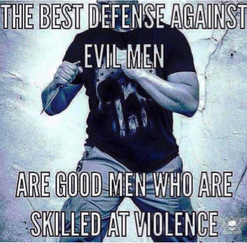

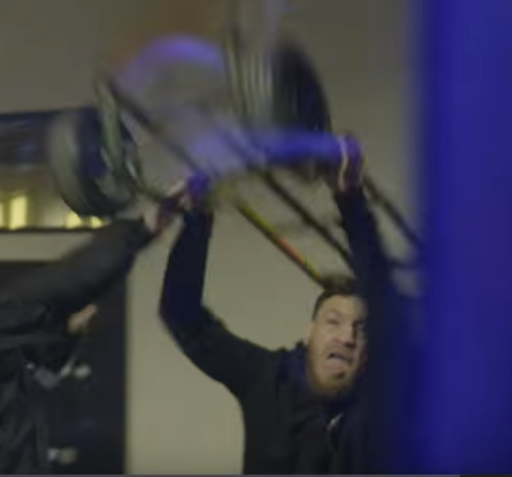
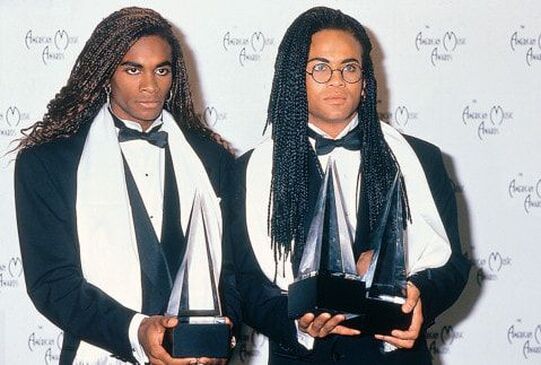




 RSS Feed
RSS Feed